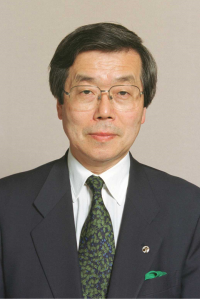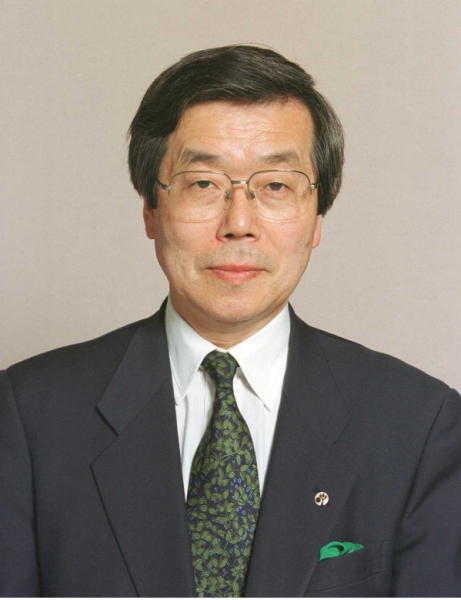The term “innovation” should not be limited to technical innovation: A misunderstanding has seen downgraded from “gain a profit.”

KOJIMA Akira, Chairman of World Trade Center Tokyo, Inc., Member, Board of Trustees of the National Graduate Institute for Policy Studies
Innovation is often understood to mean “technical innovation” and as a result the dynamism of Japan’s economy and industry, that is to say its ability to be profitable, is largely overlooked. Certainly innovation is connected to technology but it is not limited to technological change. It includes the idea of new technologies and new ideas being introduced to the market place, and their acceptance by consumers, enterprises gaining profit, and society being able to accept new values. If innovation is seen just as technical change there is a danger of isolation, and isolated development separate from a social context, without technology responding enough to society’s needs. If technicians get into technical development drawn just by their own interest in technology, there is a danger they may ignore the needs of society.
In the discussion surrounding development strategy in the Abe Shinzo administration there is much use of words such as “innovation” and “regeneration,” and “structural reform.” For innovation to function as a development strategy it is important to clarify its real meaning.
The starting point was a misconception in an economic white paper (?)
The interpretation of innovation as technological innovation, limiting it to technology, occurred in a government economic white paper in 1958. Japan’s economy at that time was still in the developing stage and it was in a period when technology and its renewal or improvement were a matter of life and death. But for Japan’s economy in a time of maturity, accepting a meaning too close to technology obstructs further development.
The well-known Austrian scholar Schumpeter (Joseph Alois Schumpeter) has persuasive insights into innovation. According to Schumpeter innovation is a new synthesis to realize change through five types of activity, and is a new departure. The five types of change are: (1) The production of a new kind of wealth (object or service) not yet known to consumers; (2) The introduction of a new production method; (3) A new avenue for sales; (4) Acquiring a new source of raw materials or part manufactured goods; (5) Realizing a new type of organization. This could be described as creation of new value, a process giving birth to new social values connected to practical use in society and popularization.
Technical change and reform on its own is not innovation, but is invention or discovery. Applied to innovation in the manufacturing process, it is process innovation. This product innovation and process innovation occurring in the modernization of Japan is where the late Peter Drucker made an outstanding contribution.
System change where technology and business gain
According to the World Economic Forum (WEF), in rankings for international competitive strength and development Japan is placed about 10th, but limited to technology the ability of Japanese enterprises is top ranked. However, it is often pointed out that although Japan wins out on technology it misses out on business ability. I remember that when management at NEC was congratulated for the great contribution they made to technology through the success of their asteroid probe Hayabusa (Falcon) they laughed wryly and expressed thanks but said that at the shareholders meeting they were asked pointedly why it was that with so much technology there wasn’t more profit.
Managing Innovation by Joe Tidd and John Bessant, which has the status of a textbook, stresses that innovation is often confused with invention and this is one problem in managing innovation. Innovation is the process of transforming opportunities into new ideas and putting these ideas into common practice. This is illustrated through the example of the vacuum cleaner.
There are several examples from the nineteenth century where we don’t remember who the real inventors of some of the most famous inventions were. What we remember is the name of the business that made products of them. The vacuum cleaner was invented by J. M. Spangler but he approached a leather goods manufacturer in the same town with a proposal to commercialize it. The manufacturer had no experience with vacuum cleaners but he had good ideas about selling them. His name was W.H. Hoover.
System Innovation
A strategy for development is not just lifting a company’s ability to innovate, but it consists of a skillful combination of the five elements mentioned above, while innovation in the organization of a country or a company are needed as well. On the one hand the government can support enterprise research and development through the tax system but there are also many restrictions to realizing success and there are cases where the government itself impeded innovation.
The viewpoint of system innovation or policy innovation is central. Economic Partnership Agreements (EPA or FTA) such as the TPP are an important overseas economic policy innovation when companies pursue economies of scale in wide areas beyond national boundaries and by constructing production and distribution networks.
Reform of regulations is also system innovation. Here too there is a downside to translating deregulation as “relaxing regulations.” That is because the original meaning was “removal of regulation.” Now it is not “removal” but “relaxation.” Basically with “relaxing” the regulation authorities are trying to do a partial job, giving a feeling of vested interest groups at work. Isn’t that right?
Translated from an original article in Japanese written forDiscuss Japan. [August 2014]



